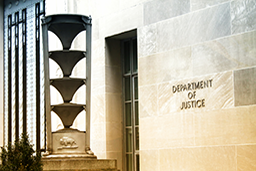Law firms are dynamic and ever-changing, as is the marketplace for legal services. That being said, in my capacity as the Los Angeles Office Managing Partner at Michelman & Robinson, LLP, I am hyper aware of shifting behaviors and technological advancements that move the needle relative to the business and practice of law.
With 2022 fast approaching, I have identified five trends emerging within the legal industry that will shape law firm operations, recruitment and the client experience in the new year. The good news is that M&R has been well ahead of the curve when it comes to all of them, allowing the firm to differentiate itself among its peers, Big Law included, here in L.A. and throughout the country.
1. Talent Acquisition
Law firms are only as good as the lawyers and staff within their ranks. To paraphrase Jack Welch, former Chairman and CEO of General Electric: a company’s assets go up in the elevator in the morning and ride down at night. This means that attracting and retaining the best attorneys—from first-year associates up through the partner level—is a must for premier firms like M&R. However, by virtue of a challenging labor market, talent acquisition across virtually all practice areas is more difficult now than any time in recent memory.
No surprise, then, that the adoption of innovative hiring and retention strategies tops the list of emerging trends going into 2022. M&R has already made a splash in this category with its recent headline-grabbing announcement regarding associate compensation. Given our mission to have associates view us not as just an arbitrary place to practice law, but as a firm where careers are built and passions realized, we have significantly adjusted our compensation scale upward, making M&R associates among the highest paid in the legal industry beginning in 2022.
Our efforts in terms of talent acquisition do not end there. M&R is also planning to launch a student debt refinancing program and a first-time mortgage initiative for associates. All of this is in addition to the ordinary perks of working at M&R, which places an immense emphasis on culture, diversity, inclusion, professional development, advancement and attorney branding.
Non-lawyer recruitment at the executive level, which is becoming more commonplace in law firms big and small, also falls under the banner of talent acquisition. M&R struck early in this regard as well. For years, the firm has had a robust C-suite in place, which now includes a Chief Operating Officer, Chief Financial Officer, Chief Advancement Officer (charged with the development of the firm’s lawyers and professional staff) and Chief Innovation and Product Office (tasked with developing new ways to deliver superior outcomes for M&R’s client and expanding our already considerable innovation competence). Our executive team frees up our legal professionals to do what they do best—practice law.
2. Elevation of the Client Experience
Client service should always be the center of a lawyer’s professional universe, yet the client experience is not always prioritized in our profession. This is beginning to change and will likely continue to do so in 2022, with the marketplace for legal services becoming increasingly competitive. In response, law firms have looked to enhance the client experience by introducing alternative fee arrangements and value-added services, among other things.
At M&R, client service excellence and client inclusion have been our defining principles since we opened the doors in 1999. We view our work on behalf of clients as a collaborative process, and always work together with them to develop strategies directed to their specific needs and objectives. In doing so, we make it a point to stand out as thought leaders in our clients’ industries and keep them involved throughout any given matter, which is indicative of the firm’s focus on the client experience.
In addition to this level of collaboration (and as addressed below), we have committed to leveraging technology to enhance the way in which we are able to represent clients. This begins with industry leading communication technologies that allow us to accommodate our clients’ chosen platforms and facilitate more convenient and seamless client interactions, but also extends to process reengineering and new product development.
3. Digital and Technological Engagement
Technological trends are always a focus across industries, the legal space included. And within the law firm world, and certainly at M&R, there is an ongoing shift towards even more digital engagement, be it with clients, colleagues, opposing counsel or the courts.
COVID-19 and the stay-at-home restrictions imposed as a result forced us all to adopt video conferencing as a way of life. For attorneys, remote hearings, depositions and meetings with clients and co-workers have become commonplace. What we have learned as an industry—and at M&R more particularly—is that this ability to harness Zoom and similar tech as a means of communications has created efficiencies in the practice of law that will certainly outlive the pandemic. Consequently, we can expect to see advancements in digital interfaces made available to legal professionals and the public by courts and other governmental agencies.
Technological improvements, including improved AI, that enable improved automation of document review and discovery, legal research, litigation support and the “mining” of the vast amount of data we generate are well underway at M&R, and there are more resources on the horizon too. These advances will ultimately serve to optimize law firm operations, reduce costs and mitigate risk, and we as a firm remain committed to availing ourselves of best-in-class tech as it comes online and is proven secure and effective.
4. Optimizing the Legal Spend
As legal fees rise, GCs across the country are being asked to reduce costs. Yet this is a real challenge, especially with escalating associate salaries, not to mention the anticipated uptick in both litigation and corporate transactions coming out of the pandemic.
Given the current state of law firm economics and the surge in demand for legal services, those in charge of corporate legal departments are beginning to reframe their fiscal mandates. As we turn the page on 2021, GCs are increasingly focused on optimizing the legal spend and viewing their lawyers and law firms as assets to be leveraged.
To get there, a rising tide of GCs are seeking out legal service providers, like those at M&R, who possess specific— even niche—industry and subject matter expertise and who can provide next-level work product. The benefits of engaging such counsel are many. Attorneys that fit the bill are able to easily identify not just legal concerns, but broader business issues as well, which means that dollars spent on legal can actually benefit bottom-line corporate objectives.
5. Diversity & Inclusion
The most sought-after and admired law firms will continue to emphasize their collective commitment to a diverse and inclusive workforce in 2022 and beyond. At M&R, diversity and inclusion is a cornerstone of our culture, operations and recruitment efforts.
The firm prides itself on fostering an inclusive environment where everyone has a voice, no matter their background, culture, ethnicity, orientation or position. This encourages healthy internal debate and innovative, strategic thinking that inures to the benefit of our client base, which itself is as diverse as the firm.
While diversity and inclusion are trending topics across industries, at M&R, they are core values. In fact, for years our Diversity & Inclusion (DI) Committee has met bi-monthly to discuss and promote these issues—ones we view as being as important as ever before.
This blog post is not offered, and should not be relied on, as legal advice. You should consult an attorney for advice in specific situations.










